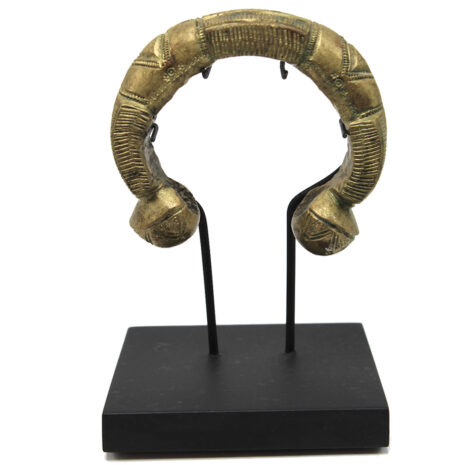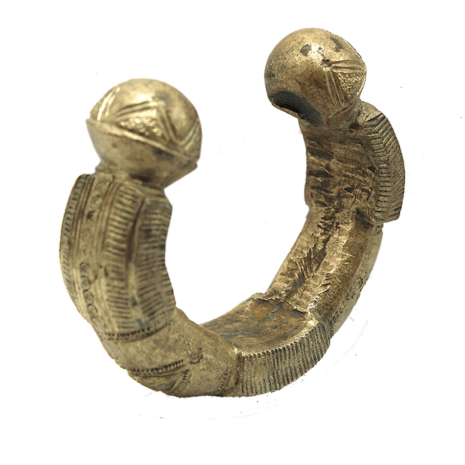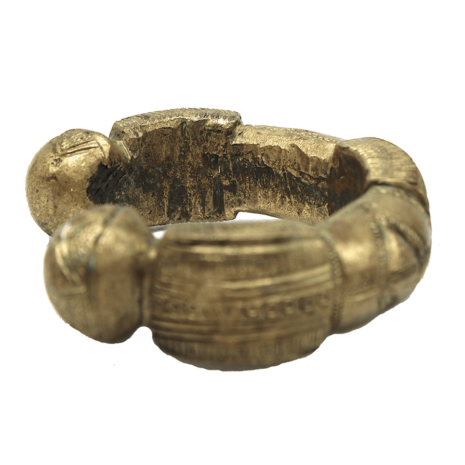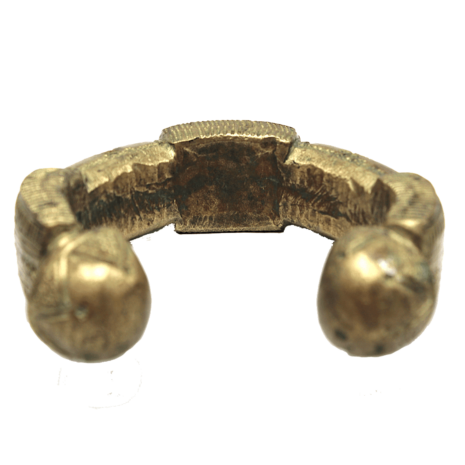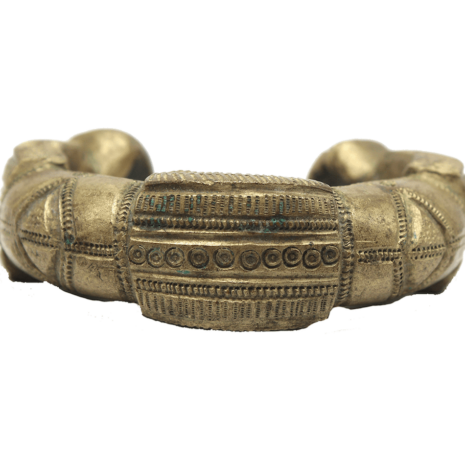Antique Tuareg Manilla Currency Bracelet, North/West Africa (3145)
Original price was: $295.00.$225.00Current price is: $225.00.
H: 3.125″ W: 3.125″ D: 0.75″ | FREE SHIPPING WITHIN CONTINENTAL US.
Tuareg horseshoe-shaped manilla with bold hammered and incised decorative motifs unique to individual Tuareg tribes Divided in sections, with etched designs, circular cutouts, ending knot finials. .
Description
Two million Tuareg herders were historically nomadic peoples traversing the Sahel and Sahara Desert in North African countries of Mali, Niger, Libya, Algeria, Chad and West African Burkina Faso. As Muslims, they cannot create figures and instead use abstract geometric designs. With a rich metalwork tradition, Tuareg artisans created elegant brass and copper bracelets as jewelry and for storing and exchanging wealth. Although manillas were primarily made by colonial western nations, the Tuareg historically created manilla-like pieces for their cultural and economic systems.
This elegantly hand chased horseshoe-shaped manilla from the Mali and Niger region has hammered and incised designs and motifs unique to individual Tuareg tribes passed on for generations. Divided into sections with traditional etched linear designs, circular cutouts, diamonds, grooves ending in large rounded knot finials incised with layered triangles designs. Excellent condition with expected minor oxidation and a crack and on a wood and metal stand.
Click here for the Blog Manillas: Former African Trade Currency.
Sources
Helen E. Hagan and Lucile Meyers, Tuareg Jewelry: Traditional Patterns and Symbols, Xlibrus Corporation, 2006.
Additional information
| Place of Origin | Africa |
|---|---|
| Period | Antique (1200-1920) |
| Date | 19th Century |
| Materials and Technique | Bronze/brass/copper alloy |
| Dimensions (inches) | Ht: 3.125 “:W: 3.125” Thick: .75” Circum: 8.5” |
| Dimensions (metric) | H: 7.94cm W: 7.94cm Thick: 1.91cm Circum: 21.59cm |
| Weight | 15 oz |
| Condition | Excellent, See Descripton |
| Item Number | 3145 DHM |
| Shipping Box Size |

